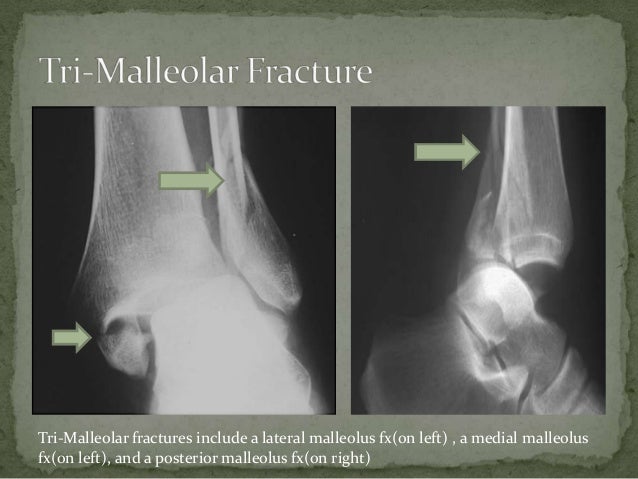

A bimalleolar ankle fracture usually involves injuries to the lateral malleolus and the medial malleolus. Some fractures can be displaced meaning there is a gap between the broken bones. Although other bones nearby can be injured in various ways, most ankle fractures involve the ends of the fibula and tibia bones.Ĭomplex ankle fractures, including both bimalleolar and trimalleolar fractures, are often very unstable. The two bones usually involved in ankle fractures are the tibia and fibula.Īt the end of the tibia bone is the medial malleolus, and at the end of the fibula is the lateral malleolus. These bones have been described as the larger “bumps” we can feel on both sides of our ankles. Several key bones are involved in both bimalleolar and trimalleolar ankle injuries: the tibia and fibula. Additional information below looks at the major risk factors for these types of ankle injuries, how they are often treated, and common complications that can occur after surgery. In some very difficult cases, surgeons must perform repeat operations to correct any malunion ( improper healing) and to further stabilize the ankle joint.Īn experienced personal injury lawyer who offers a free consultation can help coordinate best in class medical care to speed recovery and obtain full compensation.īimalleolar fractures and Trimalleolar fractures occur after a wide range of personal injury accidents including slip and falls, trip and falls, motorcycle accidents, car accidents, and many others.Ī better understanding of both bimalleolar and trimalleolar ankle fractures can be gained by noting the specific bones damaged in these injuries. Motorcycle riders and sports enthusiasts can also suffer serious harm to their ankle bones. Whether an ankle injury occurs due to a bad fall at work or in a major traffic accident, the damage done from a broken ankle can take many weeks or months to fully heal. What are Bimalleolar and Trimalleolar Fractures?


 0 kommentar(er)
0 kommentar(er)
